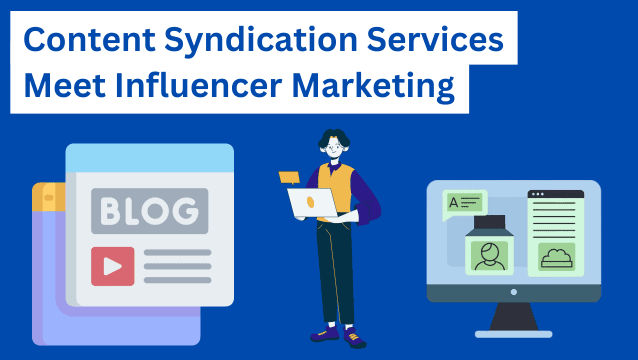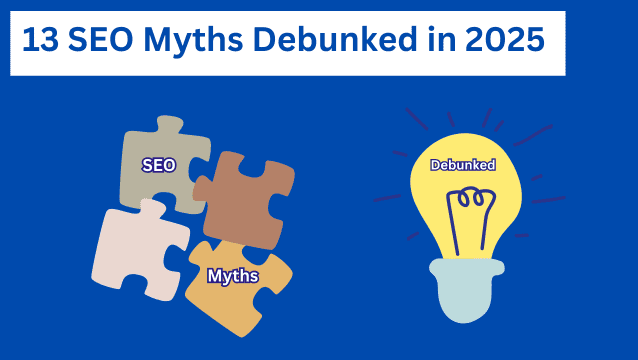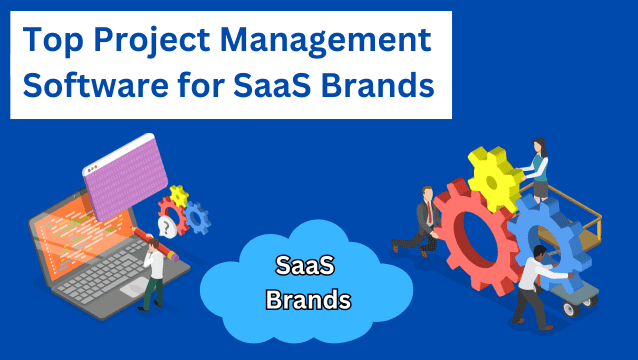Large language model optimization (LLMO) is the science of tailoring your content and technical setup for generative AI tools, such as Chat GPT, Perplexity, and Google Gemini. With LLMO, answer engines can pick up, understand, and show your pages as direct answers, increasing your brand visibility.
Artificial intelligence (AI) seems to advance almost faster than we can keep up. Today, AI-driven search has reshaped how people discover information. If you want to future-proof your business, you need to incorporate LLMO into your search engine optimization (SEO) strategy.
In this article, we’ll dive deep into LLMO. We’ll explore why it matters for modern marketers and SEO professionals, as well as its core principles and strategies.
Highlights
- Explore large language model optimization (LLMO) in-depth and discover how it differs from search engine optimization (SEO).
- Learn why LLMO matters in today’s marketing and organic search.
- Go through comprehensive strategies for three types of LLMO:
- Technical LLMO
- Content LLMO
- Off-Page LLMO (aka Brand Authority)
- Get answers on how to effectively track your LLMO and maximize success
What is LLMO?
LLM optimization is the process of tuning your website so that AI systems and virtual assistants can easily find, read, and surface your content.
What is the difference between LLMO and SEO?
LLMO and SEO share the same goal of improving online visibility, but they have different channels and approaches.
- SEO concentrates on increasing website rankings on traditional search engines, like Google and Bing, basing its strategy on keywords.
- LLMO, alternatively, focuses on increasing website and brand mentions on AI-powered search tools, emphasizing brand visibility, semantic relevance, and concise content.
So, instead of building blue links or cramming in keywords like SEO, LLMO focuses on clear, concise answers wrapped in natural language. This helps AI systems pull your text straight into their generated responses.
Why LLM optimization matters
LLMO is essential for companies trying to adapt to a new AI scenario where a segment of users is now changing their behavior and searching online using LLM tools. A SEMRUSH study confirmed that AI search visitors can surpass traditional search visitors by 2028.
Google already knows that, so it expanded its use of AI Overviews and launched its own AI model, AI Mode, a functionality that uses an LLM to work.
Screenshot provided by author
Also, more and more people are using generative AI for daily tasks and buying decisions. A Bain and Company research shows that people are changing search behaviors
In summary, websites that don’t optimize for AI lose out on both clicks and conversions.
How to optimize for LLMs?
At its heart, LLM optimization is about making your website easy for AI to find, understand, and share. Think of it like setting up a map: you want the AI to quickly spot the paths to your answers and know exactly where to point readers.
Incorporating LLM orchestration techniques enhances this process, ensuring that multiple AI models work in harmony to interpret, route, and deliver information with greater accuracy and contextual depth.
Now, let’s break down the three LLMO pillars.
Technical LLMO
Like in SEO, the technical website foundation plays a crucial role in how effectively large language models crawl, understand, and surface your content.
LLM relies on how content is structured, which includes structured data, HTML tags, and website accessibility.
Content LLMO
Content LLM optimization concentrates on writing and organizing your website content so that LLMs can “read” it and use it as a source for accurate, confident answers.
Off-Page LLMO (aka brand authority)
In summary, the final LLMO pillar covers all off-page efforts that signal brand authority and credibility, helping AI Models recognize your website as a trustworthy source of information.
Content strategies for LLM SEO and AEO
Now that you know content plays a big role in LLM optimization, it’s time to dive into it.
Let’s look at the best practices and strategies. Remember that these don’t replace your existing SEO strategy. Instead, they build on it so your content satisfies human readers and answers engines better.
Semantic relevance
Since users ask the same question in many ways, using exact-match keywords isn’t enough. Modern search engines and answer engines don’t just look for keywords anymore, but for your content’s context (i.e., semantic relevance). That’s why content hubs work so well as an organizational system for you and your readers.
Starting with a main topic (the hub or pillar), create additional content about the most relevant subtopics or related topics, using semantically related phrases (the spokes).
Here’s an example of semantically related phrases for an article about “How to manage remote teams.”
Natural language queries
People talk in complete sentences, not strings of keywords. So, write your headings and subheads like real questions: “How do I do LLM optimization?” or “What makes a great AEO snippet?”. Then, answer them in your brand voice.
This mirrors how chatbots are trained—on conversations—so the AI instantly recognizes your Q&A format as the exact match for a user’s chat prompt. When your headings and answers directly match your audience’s queries, it makes it a lot easier for LLMs and answer engines to pick your content and use it for their response.
Focus on long-tail queries
Concentrate on long-tail keywords that mirror real conversational queries. Use tools like AnswerThePublic or Ahrefs’ “Questions” report to find phrases such as “how does attention mechanism improve LLM retrieval” or “best schema for AI-driven FAQs.”
Then, integrate these variations naturally in your headings and content without forcing them.
To boost conversions, target commercial queries
LLMs don’t just provide information about brands; they recommend them. So, to make the investment in AEO services worth it, focus on commercial queries about your product or service. Good examples are prompts like “Website to book flights to NYC,” “Best credit card,” “Top marketing agencies in the UK,” and “Best air fryer model.”
These queries are generally searched once the user has reached the final decision stage of the buying process. Having your brand mentioned there means more traffic and sales.
Concise answers
AI assistants love content that answers queries in-depth and without the fluff. So, lead with a crisp, 50–100-word answer at the top of each section. For example:
“LLM optimization means structuring your page so AI platforms like ChatGPT can pull out your answer instantly.”
After that, give more details. Think of the first paragraph as your “elevator pitch,” then expand below. Short bullets or numbered steps work great here, too. Just make sure to keep that first section easy to read.
Schema markup
While structured data is not a ranking factor for SEO, it’s essential for AEO. Schema markup helps generative engines understand your page’s context easily. It’s like giving the model a neon sign that says, “Pull this answer from here.”
So, focus on adding them to your landing pages and blog posts. Some good examples of schema types for AEO are:
- Review and Aggregate Rating
- Organization
- Website
- FAQ
Content structure for model attention
While you can’t tweak an AI’s inner attention mechanism, you can guide it. Use clear H2 and H3 headings, short paragraphs with a few lines each, and bold call-outs for essential facts. Lists, call-out boxes, original images, and question headers act like signposts, steering the AI’s focus straight to your best material.
Include stats and citations in your content
A study conducted by AI researchers showed that websites that included proprietary quotes, statistics, and citations have higher chances of being referenced by LLM responses. This happens because this type of input proves brand authority, which is extremely important to AI Engines.
Technical optimizations for LLMs
LLM optimization is more than just sharpening your content. Your site’s technical optimizations help AI crawlers (search bots) find, read, and index everything you create.
Allow AI crawlers
First, nail down crawlability. AI-driven engines use specialized user agents, often labeled “ai-bot” or “answer-crawler,” to fetch your pages. If your robots.txt disallows key directories or blocks critical scripts, those engines won’t see your website.
Audit your log files monthly to spot 4xx or 5xx errors returned to AI user agents. If you find a blocked JSON-LD file or a missing sitemap entry, unblock it and ensure they are accessible.
Keep a good technical SEO foundation. Make sure your sitemap and canonical tags are up-to-date. A broken or outdated sitemap can leave new content in limbo, while incorrect canonical URLs can split entity signals across duplicates.
Update internal links
LLMs don’t “follow” internal links the way search engine crawlers do, since they don’t actively browse your site. However, internal links still matter for LLMs, and here’s how:
- LLMs are trained on snapshots of content, including pages with internal linking structures.
- The context provided by internal links helps establish topical relationships, improving the semantic structure of a website.
Site performance
AI-driven crawlers have limited resources and time. If your page relies heavily on JavaScript, loads tons of scripts, or runs slow animations, the crawler may time out before executing them all. In that case, it might only grab the initial HTML and skip over your JSON-LD and structured data, which tell AI the key facts it needs.
Here are some things you can do to avoid this:
- Use compression tools to shrink file sizes and cut down on download time and CPU work
- Keep your JavaScript lean and minimize render-blocking scripts
- Serve critical content in your HTML so AI can see it immediately
By combining these methods, you can give AI the complete picture of your page’s intent and maximize the chance of serving your content instead of your competitors’.
There’s also a secondary upside to having excellent site performance. If the performance increases your search rankings in SERP, Google can prefetch your pages, further reducing load times and potentially increasing conversions in traditional search.
Off-page LLM optimization
Off-page LLM optimization focuses on enhancing your brand’s authority across the internet, not only on your own website. This is crucial to your AI-SEO strategy since LLMs rely on publicly available data to generate answers. So if your brand or content is consistently referenced in reputable sources, you’re more likely to be included in AI-generated responses.
To measure the effectiveness of these efforts, adopting an LLM evaluation framework helps track how well your brand signals are being picked up, assess visibility in AI-generated outputs, and guide future optimization strategies.
Increase your brand mentions
Increasing brand mentions is one of the fastest ways to have your business shown on LLM-generated responses and AI Overviews, and that’s why it’s crucial to invest in PR and Link-Building campaigns to improve your digital footprint.
But, don’t take a scattered approach. Map websites that are important to your business niche and try to build links there. Partnering with an authority link building agency like uSERP can help you land valuable placements..
Another effective strategy is to create rich materials that naturally attract links, such as original research, data studies, and unique insights that others will reference. These assets not only attract links naturally but also boost your authority in the eyes of both users and LLMs.
Invest in UGC and Reddit optimization
LLM values user-generated content (UGC) like community forums like Reddit and Quora. So, make sure your brand is appearing there. When people ask questions and your product or service gets mentioned in helpful answers, it tells the AI that your brand is trusted and relevant.
Don’t spam or force it. Just ensure there’s good, honest information about your brand. That could mean answering questions, writing helpful posts, sharing case studies, or encouraging customers to share their good experiences.
Diversify your marketing strategy
An integrated marketing strategy is now more important than ever. LLMs consider brand signals from several sources, including social media, YouTube, forums, news sites, and podcasts. That means your brand needs to show up consistently across multiple channels. This can also include conversational channels, like a custom AI phone agent that reinforces your brand messaging during support or sales calls.
So, focus on building a presence where your audience already spends time, either sharing useful content on LinkedIn or short videos on YouTube.
Claim your presence on Wikipedia
The information about your business in Wikipedia can make the difference, either showing or not in AI-answers, since the online encyclopedia makes up a significant proportion of LLM training data.
“Every LLM is trained on Wikipedia content, and it is almost always the largest source of training data in their data sets,” Selena Deckelmann, CPTO of Wikimedia Foundation.
So, if you haven’t done it yet, claim your brand on Wikipedia and make sure the information placed there is helpful and accurate.
How to track LLM optimization success?
To know if your LLMO strategy is working, focus on three key metrics:
- Monitor AI mentions
- Analyze referral traffic from AI-powered tools
- Backlink profile growth
1. Monitor AI mentions
You can use AI Analytics tools, such as Profound, Oterlly, and Scrunch, to measure LLMO results.
These platforms allow you to track your brand visibility, position, and sentiment in pre-set prompts, providing insights into how your brand performs across different AI platforms and identifying opportunities to improve your relevance for generative answers.
Remember that just like SEO, LLMO is a long-term strategy that can take weeks to several months to see results, especially considering how quickly AI bots improve their capabilities.
2. Analyze referral traffic from AI-powered tools
Use GA4 to check the traffic your website has received from AI engines. To do that:
- Access Reports > Acquisition > Traffic acquisition
- Filter or search for referral sources like:
You can also share links specifically made for AI-driven environments (like your chatbot, forums, or third-party content) with UTM parameters for URLs to track them precisely. For example:
?utm_source=ai_tool&utm_medium=referral&utm_campaign=llmo
Finally, create a Looker Studio dashboard with your referral data to easily see data reflected in charts and tables. At uSERP, our clients automatically get access to this as soon as they start working with us, allowing them to see real-time data anytime.
3. Backlink profile growth
Since high-authority mentions fuel LLM visibility, you should track:
- Mentions from AI training sources (e.g., Wikipedia, Reddit, Quora, etc.)
- Links from topical authority websites
- Growth in referring domains
If your backlink profile shows growth in these areas, it signals to AI models that your brand is a trusted and relevant source, improving your LLMO success.
Can I search for my brand in LLMs to track success?
Searching for your brand in LLMs is not enough to track the success of your AI-SEO strategy, since they can generate different answers depending on prompt phrasing, user context, and location.
While tools to accurately track LLMO results are still evolving, the best options include platforms that allow you to set specific locations and personas.
Boost your LLM visibility with uSERP
LLM optimization isn’t a set-it-and-forget-it tactic. It’s a continual cycle of brand visibility refinement, technical optimization, and content strategies. It seems simple, but it requires a lot of organization and strategy. If it seems overwhelming, you can count on uSERP. We specialize in SEO and LLMO services that help brands increase their visibility in both traditional search engines and AI-powered answer platforms. Book an intro call and see how we can help you.


